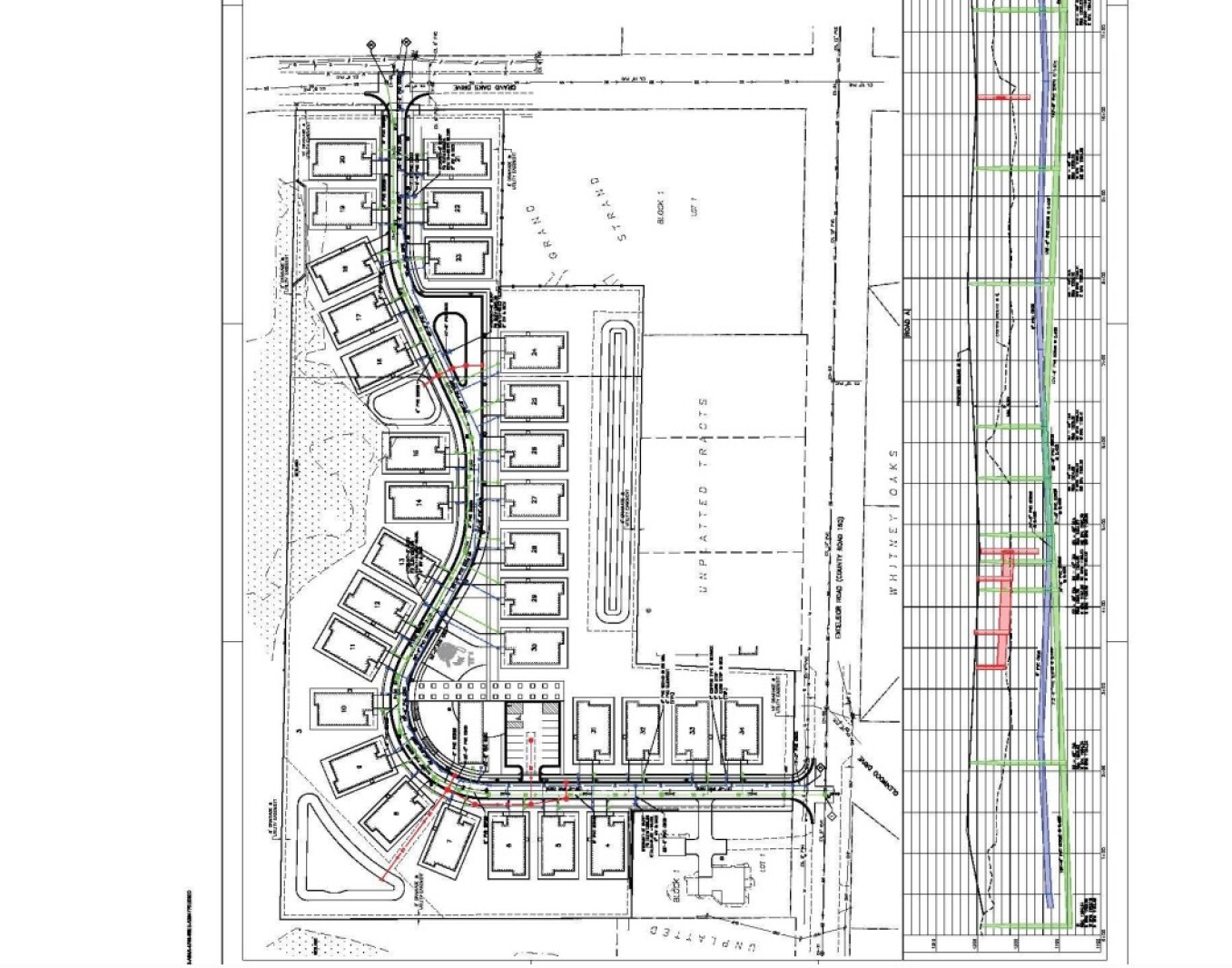Report on the Environmental Impact of U.S. Meat Supply Chains and Alignment with Sustainable Development Goals
Executive Summary
A systematic analysis conducted by the University of Michigan and the University of Minnesota, published in Nature Climate Change, provides a detailed assessment of the environmental impacts of U.S. meat supply chains. The research quantifies the “carbon hoofprint” for beef, pork, and chicken for every city in the contiguous United States, revealing significant greenhouse gas emissions comparable to residential energy consumption. This report reframes the study’s findings through the lens of the United Nations Sustainable Development Goals (SDGs), highlighting its direct implications for climate action, sustainable cities, and responsible consumption and production.
Key Findings and Environmental Impact Analysis
The study’s primary findings underscore the complexity and scale of emissions from the meat sector, offering critical data for sustainability initiatives.
- The total urban carbon hoofprint of the U.S. is larger than the entire carbon footprint of Italy, indicating a substantial impact on global emissions.
- A city’s hoofprint size is more strongly correlated with its supply chain linkages to rural counties for animal feed, livestock raising, and processing than with its total meat consumption volume.
- Emissions vary significantly by location due to regional differences in agricultural practices, including feed composition, land-use changes, and nitrogen fertilizer application rates.
- Beef is consistently the largest contributor to the carbon hoofprint, followed by pork and then chicken.
Alignment with SDG 12: Responsible Consumption and Production
The research directly supports the objectives of SDG 12 by providing a transparent analysis of food system impacts and identifying pathways toward sustainability.
- Sustainable Production Patterns: The study maps the environmental costs associated with the entire meat supply chain, from fertilizer use for feed to manure management, providing a foundation for developing more sustainable production methods.
- Responsible Consumption: By quantifying the high impact of beef, the findings encourage dietary shifts toward lower-impact proteins like poultry, promoting more responsible consumption choices among urban populations.
- Reducing Food Waste: The report identifies the reduction of edible food loss as a key strategy for mitigating environmental impact, directly aligning with SDG Target 12.3, which aims to halve per capita global food waste at the retail and consumer levels.
Implications for SDG 13: Climate Action
The “carbon hoofprint” analysis is a critical tool for addressing SDG 13 by quantifying a major source of greenhouse gas emissions and proposing targeted mitigation strategies.
- The study provides granular, city-specific data on meat-related emissions, enabling local and national governments to integrate food systems into their climate action plans.
- It demonstrates that strategic interventions in the food system can yield significant greenhouse gas savings, contributing to national climate commitments.
Contributions to SDG 11: Sustainable Cities and Communities
The research offers invaluable insights for achieving SDG 11, particularly Target 11.6, which focuses on reducing the adverse per capita environmental impact of cities.
- By mapping the supply chains that connect urban consumption to rural production, the study makes the environmental footprint of cities more transparent.
- The city-specific data empowers municipal governments and residents to develop localized policies and initiatives aimed at reducing their consumption-based emissions. For example, the analysis traces the beef supply chain for Los Angeles to 469 counties for livestock and 828 counties for feed, illustrating the vast geographic scope of a single city’s impact.
Linkages to SDG 2 (Zero Hunger) and SDG 15 (Life on Land)
The study’s scope also intersects with other critical development goals.
- SDG 2: By advocating for the reduction of food loss, the research supports efforts to enhance food security and promote sustainable agriculture.
- SDG 15: The analysis accounts for key drivers of terrestrial ecosystem degradation, including land-use change for feed production and nitrous oxide emissions from fertilizer, highlighting the connection between meat consumption and life on land.
Proposed Mitigation Strategies and Policy Implications
The report outlines actionable scenarios that cities can implement to substantially reduce their environmental impact. The most effective strategies identified could reduce the carbon hoofprint by 14-51%.
- Promote Dietary Shifts: Encourage a transition from beef to poultry consumption to achieve significant emissions reductions.
- Reduce Food Waste: Implement policies and programs aimed at halving food loss and waste.
- Leverage Data for Policy: Utilize platforms like the Food System Supply-Chain Sustainability (FoodS³) model to inform evidence-based environmental policies.
Conclusion: Fostering Partnerships (SDG 17) for a Sustainable Future
This research concretely demonstrates the interdependence of urban and rural communities. By making opaque supply-chain linkages transparent, it underscores the need for collaboration between cities and rural areas to achieve shared environmental and economic goals. Fostering such partnerships, in line with SDG 17, is essential for creating more resilient and sustainable food systems for the future.
Analysis of Sustainable Development Goals in the Article
1. Which SDGs are addressed or connected to the issues highlighted in the article?
-
SDG 2: Zero Hunger
- The article discusses the sustainability of food production systems, specifically focusing on the meat supply chain. It examines factors like animal feed production, fertilizer use, and land-use change, which are all critical components of Target 2.4 concerning sustainable and resilient agricultural practices.
-
SDG 11: Sustainable Cities and Communities
- The research is centered on the environmental impact of cities, calculating meat’s “carbon hoofprint” for “every city in the contiguous U.S.” This directly relates to reducing the adverse environmental impact of urban areas, a key goal of SDG 11. The article explicitly states the study has “huge implications for how we gauge the environmental impact of cities.”
-
SDG 12: Responsible Consumption and Production
- This is a central theme. The article analyzes the environmental impact of consumption patterns (meat eating) and the entire production supply chain. It proposes solutions based on changing consumption, such as “dietary shifts from beef to poultry,” and reducing production inefficiencies by tackling “edible food loss.”
-
SDG 13: Climate Action
- The primary focus of the article is on climate change mitigation. The “carbon hoofprint” is a measure of “greenhouse gas emissions.” The entire study aims to calculate these emissions and provide strategies for their reduction, directly aligning with the goal of taking urgent action to combat climate change.
-
SDG 15: Life on Land
- The article mentions that meat-related emissions are affected by “land-use change” and the impacts of producing animal feed, such as “nitrogen fertilizer application rates.” These factors directly relate to the sustainable management of terrestrial ecosystems.
-
SDG 17: Partnerships for the Goals
- The article concludes by emphasizing the “collective responsibility for cities and rural communities to collaborate in the shared goal of reducing environmental impacts.” This highlights the need for partnerships between different communities to achieve sustainability goals.
2. What specific targets under those SDGs can be identified based on the article’s content?
-
Under SDG 2 (Zero Hunger)
- Target 2.4: By 2030, ensure sustainable food production systems and implement resilient agricultural practices. The article’s analysis of the environmental impacts of the meat supply chain, including feed production and fertilizer use, directly addresses the sustainability of current food production systems.
-
Under SDG 11 (Sustainable Cities and Communities)
- Target 11.6: By 2030, reduce the adverse per capita environmental impact of cities. The study’s calculation of the “urban carbon hoofprint” is a direct measurement of this impact, and the proposed solutions are aimed at its reduction.
-
Under SDG 12 (Responsible Consumption and Production)
- Target 12.3: By 2030, halve per capita global food waste at the retail and consumer levels and reduce food losses along production and supply chains. The article explicitly identifies “implementing strategies to reduce edible food loss” and “halving food waste” as a key scenario for reducing the carbon hoofprint.
- Target 12.8: By 2030, ensure that people everywhere have the relevant information and awareness for sustainable development and lifestyles. The study provides “city-specific information that residents and governments can use to make positive changes,” empowering them to adopt more sustainable lifestyles.
-
Under SDG 13 (Climate Action)
- Target 13.2: Integrate climate change measures into national policies, strategies and planning. The research provides data that can be used by city governments to “develop policies to reduce those impacts,” thereby integrating climate considerations into urban planning.
- Target 13.3: Improve education, awareness-raising and human and institutional capacity on climate change mitigation. The article and the study it describes serve to educate the public on how “diets in cities impact their environmental impacts,” raising awareness and capacity for mitigation.
-
Under SDG 17 (Partnerships for the Goals)
- Target 17.17: Encourage and promote effective public, public-private and civil society partnerships. The article’s call for “cities and rural communities to collaborate” to make supply chains more sustainable is a direct appeal for such partnerships.
3. Are there any indicators mentioned or implied in the article that can be used to measure progress towards the identified targets?
-
Greenhouse Gas Emissions from Meat Supply Chains
- The central metric of the study is the “carbon hoofprint,” which is a direct indicator of greenhouse gas emissions. The article quantifies this, stating America’s urban hoofprint is “larger than the entire carbon footprint of Italy,” making it a measurable indicator for SDG 13 and SDG 11.
-
Percentage Reduction in Emissions
- The article suggests that implementing specific strategies can “reduce the hoofprint by 14-51%.” This percentage reduction serves as a clear, measurable indicator of progress towards climate and sustainability goals.
-
Rate of Food Loss and Waste
- The recommendation to “halve food waste” implies that the volume or percentage of “edible food loss” is a key indicator. Measuring the reduction in food waste along the supply chain would track progress towards Target 12.3.
-
Dietary Composition
- The article proposes “dietary shifts from beef to poultry” as a major solution. Therefore, the per capita consumption of different types of meat (e.g., the ratio of beef to poultry consumption) can be used as an indicator to measure the adoption of more sustainable consumption patterns (SDG 12).
-
Agricultural Input Rates
- The study identifies “nitrogen fertilizer application rates and related nitrous oxide emissions” as a variable impacting the hoofprint. These rates are measurable indicators of the environmental intensity of agricultural practices related to feed production (SDG 2 and SDG 15).
4. Summary Table of SDGs, Targets, and Indicators
| SDGs | Targets | Indicators |
|---|---|---|
| SDG 2: Zero Hunger | 2.4: Ensure sustainable food production systems and implement resilient agricultural practices. | Emissions related to agricultural inputs, such as “nitrogen fertilizer application rates and related nitrous oxide emissions.” |
| SDG 11: Sustainable Cities and Communities | 11.6: Reduce the adverse per capita environmental impact of cities. | The “carbon hoofprint” of cities, measured in greenhouse gas emissions. |
| SDG 12: Responsible Consumption and Production | 12.3: Halve per capita food waste and reduce food losses. | The amount or percentage of “edible food loss” and waste across the supply chain. |
| 12.8: Ensure people have information for sustainable lifestyles. | Changes in consumption patterns, such as the ratio of beef to poultry consumption, following “dietary shifts.” | |
| SDG 13: Climate Action | 13.2: Integrate climate change measures into policies and planning. | Total greenhouse gas emissions from the meat supply chain (the “carbon hoofprint”). |
| 13.3: Improve education and awareness-raising on climate change mitigation. | Percentage reduction of the carbon hoofprint, which the article states can be “14-51%.” | |
| SDG 15: Life on Land | 15.3: Combat desertification, restore degraded land and soil. | Impact of “land-use change” associated with the meat supply chain. |
| SDG 17: Partnerships for the Goals | 17.17: Encourage and promote effective partnerships. | Establishment of collaborative initiatives between “cities and rural communities” to reduce environmental impacts. |
Source: twin-cities.umn.edu







